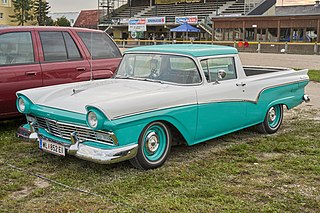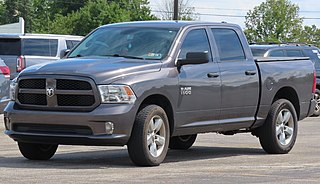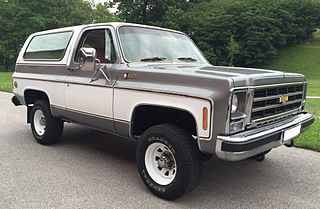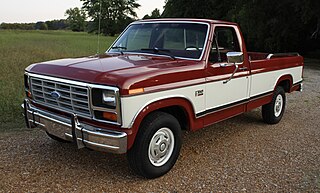External links
| Cars | |
|---|---|
| Trucks | |
| History | |
| Associated tradenames | |
| Affiliated automotive brands | |
| People | |
Studebaker passenger vehicle timeline, 1897–1967— next » | ||||||||||||||||||||||||||||||||||||||||||||||||||||||||||||||||||||||||||||||||||||||||||||||||||||||||||||||||||||||||||||||||||||||||||||||||||||||||||||||||||||||||||||||||||||||||||||||||||||||||||||||||||||||||||||||||||||||||||||||||||||||||||||||||||||||||||||||||||||||||||||||||||||||||||||||||||||||||||||||||||||||||||||||||||||||||||||||||||||||||||||||||||||||||||||||||||||||||||||||||||||||||||||||||||||||||||||||||||||||||||||||||||||||||||||||||||||||||||||||||||||||||||||||||||||||||||||||||||||||||||||||||||||||||||||||||||||||||||||||||||||||||||||||||||||||||||||||||||||||||||||||||||||||||||||||||||||||||||||||||||||||||||||||||||||||||||||||||||||||||||||||||||||||||||||||||||||||||||||||||||||||||||||||||||||||||||||||||||||||||||||||||||||||||||||||||||||||||||||||||||||||||||||||||||||||||||||||||||||||||||||||||||||||||||||||||||||||||||||||||||||||||||||||||||||||||||||||||||||||||||||||||||||||||||||||||||||||||||||||||||||||||||||||||||||||||||||||||||
|---|---|---|---|---|---|---|---|---|---|---|---|---|---|---|---|---|---|---|---|---|---|---|---|---|---|---|---|---|---|---|---|---|---|---|---|---|---|---|---|---|---|---|---|---|---|---|---|---|---|---|---|---|---|---|---|---|---|---|---|---|---|---|---|---|---|---|---|---|---|---|---|---|---|---|---|---|---|---|---|---|---|---|---|---|---|---|---|---|---|---|---|---|---|---|---|---|---|---|---|---|---|---|---|---|---|---|---|---|---|---|---|---|---|---|---|---|---|---|---|---|---|---|---|---|---|---|---|---|---|---|---|---|---|---|---|---|---|---|---|---|---|---|---|---|---|---|---|---|---|---|---|---|---|---|---|---|---|---|---|---|---|---|---|---|---|---|---|---|---|---|---|---|---|---|---|---|---|---|---|---|---|---|---|---|---|---|---|---|---|---|---|---|---|---|---|---|---|---|---|---|---|---|---|---|---|---|---|---|---|---|---|---|---|---|---|---|---|---|---|---|---|---|---|---|---|---|---|---|---|---|---|---|---|---|---|---|---|---|---|---|---|---|---|---|---|---|---|---|---|---|---|---|---|---|---|---|---|---|---|---|---|---|---|---|---|---|---|---|---|---|---|---|---|---|---|---|---|---|---|---|---|---|---|---|---|---|---|---|---|---|---|---|---|---|---|---|---|---|---|---|---|---|---|---|---|---|---|---|---|---|---|---|---|---|---|---|---|---|---|---|---|---|---|---|---|---|---|---|---|---|---|---|---|---|---|---|---|---|---|---|---|---|---|---|---|---|---|---|---|---|---|---|---|---|---|---|---|---|---|---|---|---|---|---|---|---|---|---|---|---|---|---|---|---|---|---|---|---|---|---|---|---|---|---|---|---|---|---|---|---|---|---|---|---|---|---|---|---|---|---|---|---|---|---|---|---|---|---|---|---|---|---|---|---|---|---|---|---|---|---|---|---|---|---|---|---|---|---|---|---|---|---|---|---|---|---|---|---|---|---|---|---|---|---|---|---|---|---|---|---|---|---|---|---|---|---|---|---|---|---|---|---|---|---|---|---|---|---|---|---|---|---|---|---|---|---|---|---|---|---|---|---|---|---|---|---|---|---|---|---|---|---|---|---|---|---|---|---|---|---|---|---|---|---|---|---|---|---|---|---|---|---|---|---|---|---|---|---|---|---|---|---|---|---|---|---|---|---|---|---|---|---|---|---|---|---|---|---|---|---|---|---|---|---|---|---|---|---|---|---|---|---|---|---|---|---|---|---|---|---|---|---|---|---|---|---|---|---|---|---|---|---|---|---|---|---|---|---|---|---|---|---|---|---|---|---|---|---|---|---|---|---|---|---|---|---|---|---|---|---|---|---|---|---|---|---|---|---|---|---|---|---|---|---|---|---|---|---|---|---|---|---|---|---|---|---|---|---|---|---|---|---|---|---|---|---|---|---|---|---|---|---|---|---|---|---|---|---|---|---|---|---|---|---|---|---|---|---|---|---|---|---|---|---|---|---|---|---|---|---|---|---|---|---|---|---|---|---|---|---|---|---|---|---|---|---|---|---|---|---|---|---|---|---|---|---|---|---|---|---|---|---|---|---|---|---|---|---|---|---|---|---|---|---|---|---|---|---|---|---|---|---|---|---|---|---|---|---|---|---|---|---|---|---|---|---|---|---|---|---|---|---|---|---|---|---|---|---|---|---|---|---|---|---|---|---|---|---|---|---|---|---|---|---|---|---|---|---|---|---|---|---|---|---|---|---|---|---|---|---|---|---|---|---|---|---|---|---|---|---|---|---|---|---|---|---|---|---|---|---|---|---|---|---|---|---|---|---|---|---|---|---|---|---|---|---|---|---|---|---|---|---|---|---|---|---|---|---|---|---|---|---|---|---|---|---|---|---|---|---|---|---|---|---|---|---|---|---|---|---|---|---|---|---|---|---|---|---|---|---|---|---|---|---|---|---|---|---|---|---|---|---|---|---|---|---|---|---|---|---|---|---|---|---|---|---|---|---|---|---|---|---|---|---|---|---|---|---|---|---|---|---|---|---|---|---|---|---|---|---|---|---|---|---|---|---|---|---|---|---|---|---|---|---|---|---|---|---|---|---|---|---|---|---|---|---|---|---|---|---|---|---|---|---|---|---|---|---|---|---|---|---|---|---|---|---|---|---|---|---|---|---|---|---|---|---|---|---|---|---|---|---|---|---|---|---|---|---|---|---|---|---|---|---|---|---|---|---|---|---|---|---|---|---|
| ||||||||||||||||||||||||||||||||||||||||||||||||||||||||||||||||||||||||||||||||||||||||||||||||||||||||||||||||||||||||||||||||||||||||||||||||||||||||||||||||||||||||||||||||||||||||||||||||||||||||||||||||||||||||||||||||||||||||||||||||||||||||||||||||||||||||||||||||||||||||||||||||||||||||||||||||||||||||||||||||||||||||||||||||||||||||||||||||||||||||||||||||||||||||||||||||||||||||||||||||||||||||||||||||||||||||||||||||||||||||||||||||||||||||||||||||||||||||||||||||||||||||||||||||||||||||||||||||||||||||||||||||||||||||||||||||||||||||||||||||||||||||||||||||||||||||||||||||||||||||||||||||||||||||||||||||||||||||||||||||||||||||||||||||||||||||||||||||||||||||||||||||||||||||||||||||||||||||||||||||||||||||||||||||||||||||||||||||||||||||||||||||||||||||||||||||||||||||||||||||||||||||||||||||||||||||||||||||||||||||||||||||||||||||||||||||||||||||||||||||||||||||||||||||||||||||||||||||||||||||||||||||||||||||||||||||||||||||||||||||||||||||||||||||||||||||||||||||||
| | This truck-related article is a stub. You can help Wikipedia by expanding it. |
{{Infobox automobile |body_style=2-door pickup |layout=Front engine, rear-wheel drive / four-wheel drive |manufacturer=Studebaker |production=1957-1960 |image=Studebaker Transtar Pickup.jpg |caption = Studebaker Transtar Truck Model 3-E
|engine=
Transtar was the model name given to the line of trucks produced by the Studebaker Corporation of South Bend, Indiana, from 1956-1958 and 1960-1963 (although the last vehicles were sold as 1964 models). The name was used on most trucks in the Studebaker E-series, but not all. The Transtar name was first introduced for the 1956 (2E series) model year in 1/2-ton, 3/4-ton, 1-ton, 2-ton, and 2-ton heavy duty capacities. The three smaller models were available with factory-built pick-up bodies. The basic styling of these trucks dated back to the 1949 models, though they had received some styling and engineering changes in 1954 and 55. The Transtar name continued to be used on most of the 1957-58 3E series trucks, though a stripped-down Studebaker Scotsman model without the Transtar name was introduced in the 1958 model year. The 57-58 Transtars received an aggressive new fiberglass grille that attempted (largely successfully) to make Studebaker's outdated cab design look fresh and new. For unknown reasons, the Transtar name was dropped for the 1959 4E series Studebaker trucks and changed to Deluxe.
For 1960, Studebaker introduced a new line of 1/2-ton and 3/4-ton trucks under the name Studebaker Champ. The Champs used front-end and cab sheetmetal from the 1959-60 Lark passenger cars, mated to their existing light-duty truck chassis and drive trains. The Champs were created in response to the Ford Ranchero (introduced in 1957) and Chevrolet El Camino (introduced in 1959), which used passenger car styling and features in a light-duty pickup truck. The Transtar name reappeared on Studebaker's medium- and heavy-duty trucks (1- and 2-ton) for 1960, and continued to be used on these trucks up through its 1964 models. Studebaker suspended production of all of its truck models when it closed its United States factory in December 1963.

The Ford Ranchero is a coupe utility that was produced by Ford between 1957 and 1979. Unlike a standard pickup truck, the Ranchero was adapted from a two-door station wagon platform that integrated the cab and cargo bed into the body. A total of 508,355 units were produced during the model's production run. Over its lifespan it was variously derived from full-sized, compact, and intermediate automobiles sold by Ford for the North American market.

The Ram pickup is a full-size pickup truck manufactured by Stellantis North America and marketed from 2010 onwards under the Ram Trucks brand. The current fifth-generation Ram debuted at the 2018 North American International Auto Show in Detroit, Michigan, in January of that year.

The International Harvester Company was an American manufacturer of agricultural and construction equipment, automobiles, commercial trucks, lawn and garden products, household equipment, and more. It was formed from the 1902 merger of McCormick Harvesting Machine Company and Deering Harvester Company and three smaller manufacturers: Milwaukee; Plano; and Warder, Bushnell, and Glessner. Its brands included McCormick, Deering, and later McCormick-Deering, as well as International. Along with the Farmall and Cub Cadet tractors, International was also known for the Scout and Travelall vehicle nameplates. In the 1980s all divisions were sold off except for International Trucks, which changed its parent company name to Navistar International.

The Jeep Gladiator, Jeep Pickup or J-series is a series of full-size pickup trucks based on the large Jeep SJ (Wagoneer) platform, which was built and sold under numerous marques from 1962 until 1988. The Jeep Gladiator/Pickup design is noteworthy for remaining in production for more than 26 years on a single automobile platform generation. The Gladiator was the basis of the first post-war U.S. Army trucks designed to be civilian vehicles and adapted to military use. Numerous versions of the Jeep pickup were built in other markets, including Mexico by Vehículos Automotores Mexicanos (VAM) and Argentina by Industrias Kaiser Argentina (IKA).

The Chevrolet K5 Blazer is a full-size sport-utility vehicle that was built by General Motors. Being GM's smallest full-size SUV, the K5 Blazer is part of the C/K truck series. Introduced to the Chevrolet line for the 1969 model year, the K5 Blazer was replaced for 1995 by the Chevrolet Tahoe. In 1970, GMC introduced its own model of the truck, called the Jimmy, which was discontinued in 1991 and replaced by the Yukon. The "Jimmy" name was chosen to reflect how GM may sound in a similar manner to how Jeep was thought to be a pronunciation of GP in the competing market. Both were short-wheelbase trucks and available with either rear- or four-wheel drive. Despite all Chevrolet versions from 1969 to 1988 having the "K5" badge, GM never internally referred to the model as the K5 Blazer/K5 Jimmy. Officially, the vehicles have always been referred to as the Blazer/Jimmy, without the K5 prefix. After the release of the S-Series Blazer/Jimmy in 1983, the models were officially renamed "Chevrolet Full-Size Blazer" and "GMC K-Jimmy", though they are often unofficially still addressed as "K5" to avoid confusion.

The C series is a line of pickup trucks sold by Dodge from 1954 until 1960. It replaced the Dodge B series of trucks and was eventually supplanted by the Dodge D series, introduced in 1961. Unlike the B series, which were closely related to Dodge's prewar trucks, the C series was a complete redesign. Dodge continued the "pilot house" tradition of high-visibility cabs with a wrap-around windshield introduced in 1955. A two-speed "PowerFlite" automatic transmission was newly available that year. The Dodge Town Panel and Town Wagon also used the new design.

The Jeep Forward Control is a truck that was produced by Willys Motors, later named Kaiser Jeep, from 1956 to 1965. It was also assembled in other international markets. The layout featured a cab over design.

The Studebaker Champ is a light-duty pickup truck produced by the Studebaker Corporation from 1960-1964, the last such vehicles designed by the company before leaving the automobile manufacturing business in 1966.

The E series Studebaker trucks are the original 1955 E series Studebaker trucks, sold in half-ton, 3/4-ton, and 1-, 1.5-, and 2-ton capacities, and the 1956: 2E series; 1957-58: 3E series; 1959: 4E series; 1960: 5E series; 1961: 6E series; 1962: 7E series; and 1963-64: 8E series. Given these model-year designations, "E series" has come to mean all Studebaker trucks built between 1955 and the end of all vehicle production in the US in December 1963. Within each tonnage rating, these trucks were all fairly similar, since Studebaker was in dire financial straits during this entire period and invested virtually nothing to update its truck division products. For the 1956 and 1957-58 models, all Studebaker trucks were called Transtar.

The Chevrolet Task Force is a light-duty and medium-duty (3600) truck series by Chevrolet introduced in 1955, its first major redesign since 1947. Known as the Blue Chip in the parallel GMC it had more modern design than the preceding Advance Design without sacrificing ruggedness or durability.

The International R series is a model range of trucks that was manufactured by International Harvester. Introduced in 1953 as a further development of the International L series, the model line marked the introduction of the IH "tractor" grille emblem on International road vehicles. Sharing a cab with its predecessor, the R-series marked the introduction of four-wheel drive vehicles and the wider use of diesel engines.

The Ford B series is a bus chassis that was manufactured by the Ford Motor Company. Produced across six generations from 1948 to 1998, the B series was a variant of the medium-duty Ford F series. As a cowled-chassis design, the B series was a bare chassis aft of the firewall, intended for bodywork from a second-stage manufacturer. While primarily used for school bus applications in the United States and Canada, the chassis was exported worldwide to manufacturers to construct bus bodies for various uses.

The Chevrolet Van or Chevy Van is a range of vans that was manufactured by General Motors from the 1964 to 1996 model years. Introduced as the successor for the rear-engine Corvair Corvan/Greenbrier, the model line also replaced the panel van configuration of the Chevrolet Suburban. The vehicle was sold both in passenger van and cargo van configurations as well as a cutaway van chassis that served as the basis for a variety of custom applications.

The third-generation of the Ford F-Series is a series of trucks that were produced by Ford from 1957 until 1960. Following its competitors at Dodge and General Motors, Ford widened the front bodywork to integrate the cab and front fenders together. Going a step further, the F-Series integrated the hood into the bodywork with a clamshell design; the feature would stay part of the F-Series for two decades. Although offered previously, the optional chrome grille was far more prominent than before. In the rear, two types of pickup boxes were offered, starting a new naming convention: the traditional separate-fender box was dubbed "Flareside", while "Styleside" boxes integrated the pickup bed, cab, and front fenders together. As before, Ford still offered a low-GVWR version of each model.

The fourth generation of the Ford F-Series is a line of trucks produced by Ford from the 1961 to 1966 model years. Introducing a lower and wider cab over the previous generation, Ford introduced several design changes to the model line. In line with modern pickup trucks, the bed sides, hood line, and window sill were all the same height. Ford returned the F-Series to two headlights.

The fifth generationof the Ford F-Series is a line of pickup trucks and commercial trucks that were produced by Ford from the 1967 to 1972 model years. Built on the same platform as the fourth generation F-Series, the fifth generation had sharper styling lines, a larger cab, and expanded engine options.

The seventh generation of the Ford F-Series is a range of trucks that was produced by Ford from the 1980 to 1986 model years. The first complete redesign of the F-Series since the 1965 model year, the seventh generation received a completely new chassis and body, distinguished by flatter body panels and a squarer grille, earning the nickname "bullnose" from enthusiasts. This generation marked several firsts for the model line, including the introduction of the Ford Blue Oval grille emblem, the introduction of a diesel engine to the model line, and a dashboard with a full set of instruments (optional). Conversely, this generation marked the end of the long-running F-100, the Ranger trim, and sealed-beam headlamps.

The fourth generation of the C/K series is a range of trucks that was manufactured by General Motors. Marketed by the Chevrolet and GMC brands from the 1988 to the 2002 model years, this is the final generation of the C/K model line. In a branding change, GMC adopted the GMC Sierra nameplate for all its full-size pickup trucks, leaving the C/K nomenclature exclusive to Chevrolet.

The Studebaker 2R is a series of light- and medium-duty trucks built by the Studebaker Corporation from April 1948 until the end of 1953. For the 1954 model year, after a light redesign, the line was renamed 3R and built for an additional eight months. Studebaker had worked on a still born post-war design earlier, called the R, and so the new truck was given the 2R designation. The most distinctive characteristic of Studebaker 2R/3R trucks is the cab, which remained in production with minor changes through the 1959 model year. A one-piece windshield arrived in February 1954 and a larger rear window arrived in 1955 for the succeeding E-series.